Introduction
Cascading Scorecards within the application is a relatively simple procedure. However, it will only work successfully if a considered approach is taken before embarking on the process.
There are several ways a cascade can take place, here are a few examples:
- Exact Match Cascade (with auto roll-up) (see the guide)
A master Scorecard is created and an exact ‘structure’ replica is cascaded to teams within a department. Typical examples of this approach can be seen in call-centres when all of the team Measures are the same as the management Measures, or in a safety Scorecard where the same Scorecard is used across multiple departments. - Measure Calculated Roll Up Cascade (see the guide)
Targets are set at departmental levels (usually financial) and the values are rolled up to the top-level Scorecard. For example, a sales revenue target is set across several sales groups and the result is rolled up to a company level Scorecard. - Linked Element Scorecard
A Scorecard is created with all of the required Measures and appropriate Measures are linked into other Scorecards. For example, an executive incentive Scorecard that is distributed to a set of directors. The managing director will hold all of the Measures and they will be shared across the reporting directors. They might be weighted appropriately. - Strategy Scorecards
A top-level or executive Scorecard is created and some objectives are cascaded exactly and others are cascaded but the names change to reflect the departmental activity. For example, Improve Customer Satisfaction at the top-level might be translated to Improve Customer Information Responses by the Marketing department.
The application can be used with all of the scenarios above (and more) but again, it must be stressed, careful consideration needs to be given to the cascade before building the Scorecard.
The following provides information about Linked Element Scorecard and Strategy Scorecards.
Linked Element Cascade
Of all the cascade methods, this is the easiest. Measures, Objectives, Themes, Perspectives and even whole Scorecards can be linked into each other to influence scores.
Links can go in any direction. The important thing to remember is that links only influence Scores, they do not roll up actual values.
In the example below we will demonstrate how to link a Customer Satisfaction Measure owned by the Marketing Department’s Scorecard into the International HQ objective of Improve Customer Satisfaction.
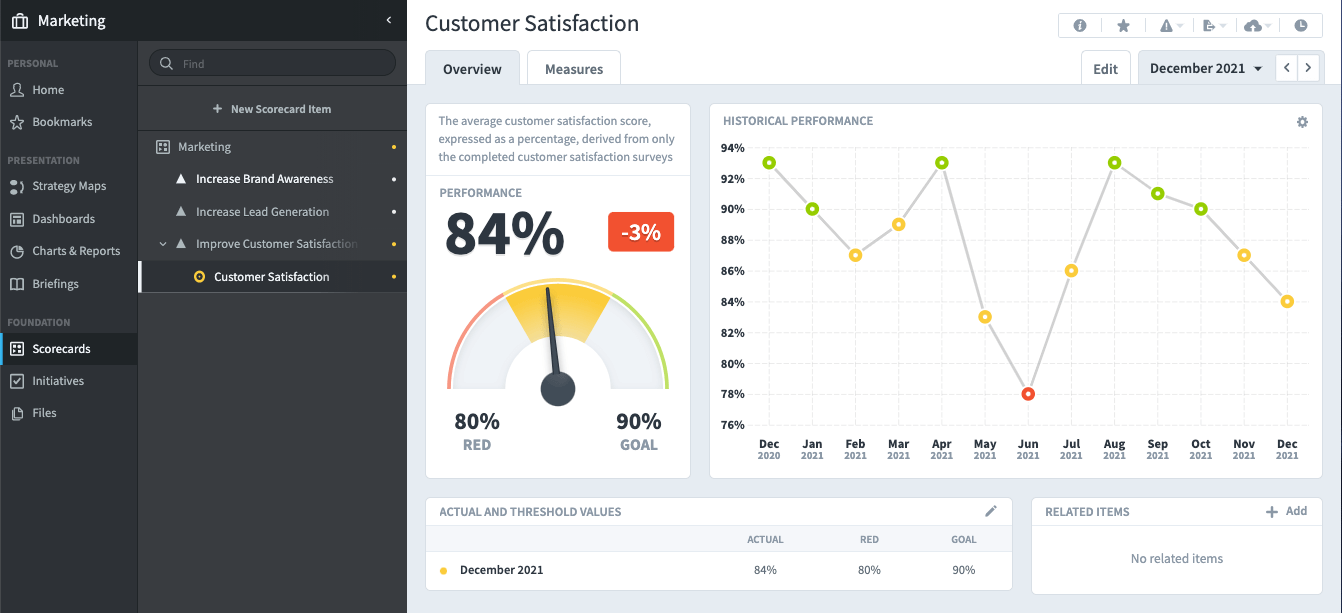
Notice that the Measure Customer Satisfaction is in the Marketing Scorecard. The Measure you are going to link into another Scorecard must exist. Go to the area where you want to use this Measure as part of its Scorecard.
In our example we will be linking the Measure Customer Satisfaction into the International Limited top-level Scorecard under the objective Improve Customer Satisfaction which is in the Customer perspective.
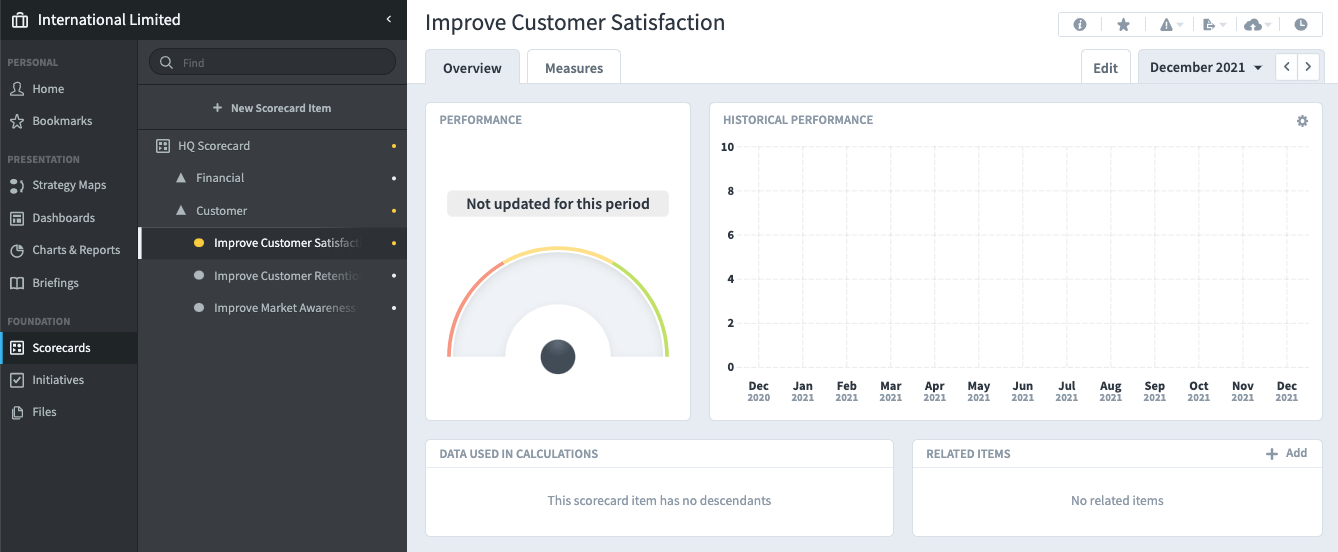
Notice there is no score showing for this objective as there are no Measures underneath it as this time.
We will now add Customer Satisfaction as a Linked Measure. Highlight the objective Improve Customer Satisfaction and click Edit at the bottom of the screen.
Click on + New Scorecard Item.
The Create Measure dialogue will appear. Instead of creating a new Measure, under Type click on the drop-down and select Linked Item:
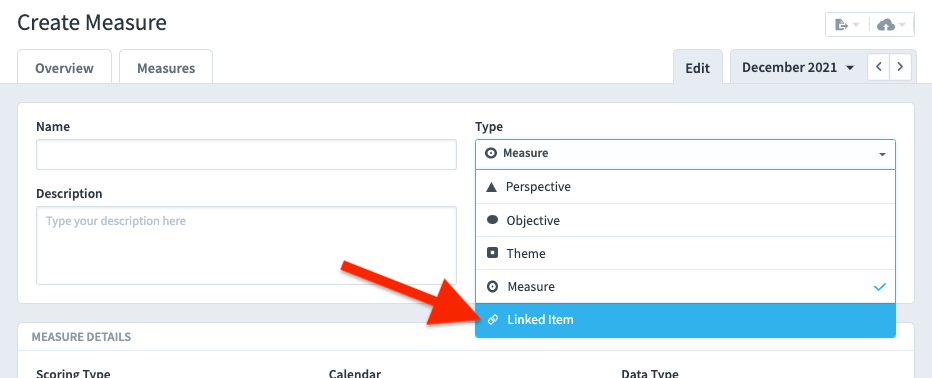
The Create Linked Item dialogue will appear with a panel called Choose Source Item. Select the item you want to link in. In this case we have selected Customer Satisfaction from the Marketing Scorecard. You can optionally select the data you want to pull with the item. The default is to pull everything. Click Create.
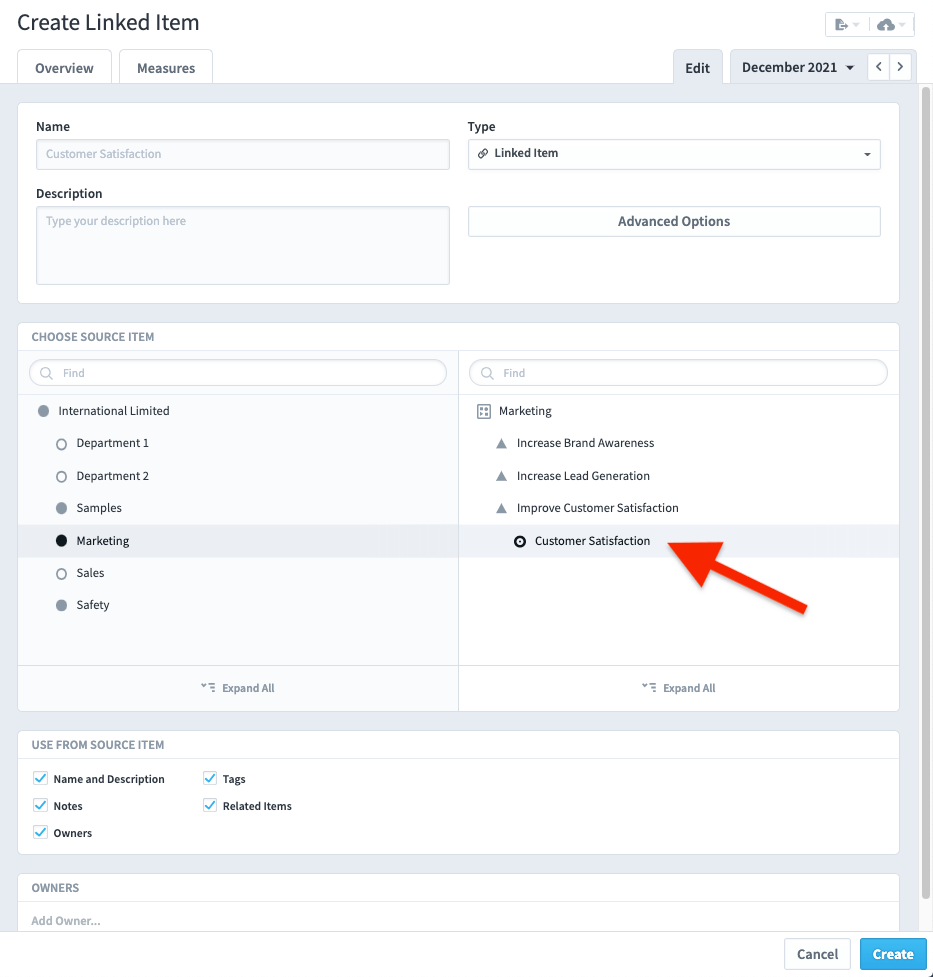
The application will create the Linked item and go on to create a new linked item by default. Click Done to complete the process.
Click on Customer Satisfaction, the linked measure has appeared. Note the small link icon to the left of the measure name.
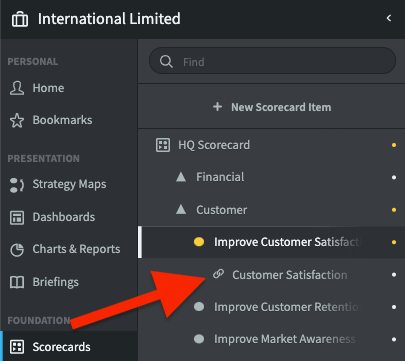
Strategy Scorecard Cascades
Strategy Scorecards usually contain a mixture of common elements and departmental elements. As with all Scorecard configurations, it is important to have a good view as to what the cascade will look like in advance of entering data into the application.
With a strategy Scorecard, only objectives are cascaded. In some instances, the departmental measures may be the same as the HQ measures, for example, sales revenue, but in most instances the departmental measures will be different.
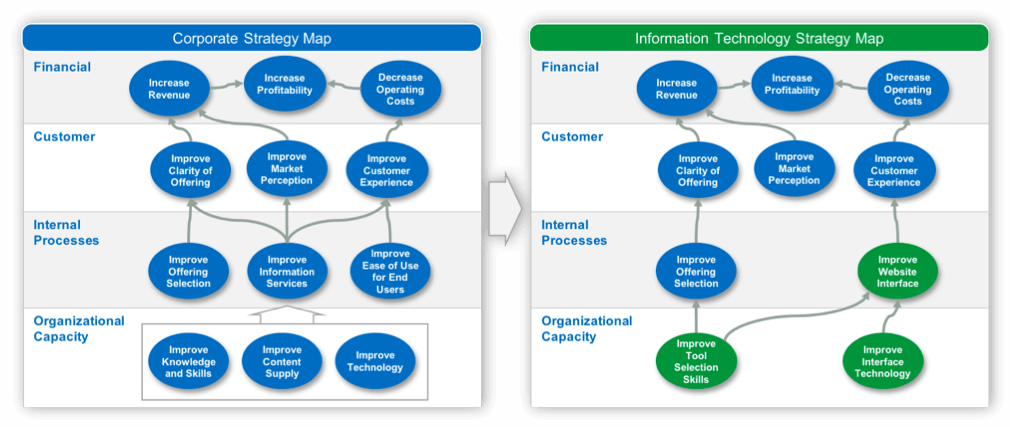
The example above uses a Strategy Map as the basis of a cascade. Here we can see a set of top-level corporate objectives and the corresponding strategy map for the IT department.
In this case, only three objectives will be cascaded to the IT departments Scorecard. The objectives, although obviously contributing to the corporate strategy are all different and will, therefore, have different Measures. However, the IT department might be assessed on its contribution to the corporate objective, for instance, Improve Offering Selection and so that objective might be ‘linked’ to their Scorecard.
Strategy Scorecards can use all of the methods described above to reach the right result.
